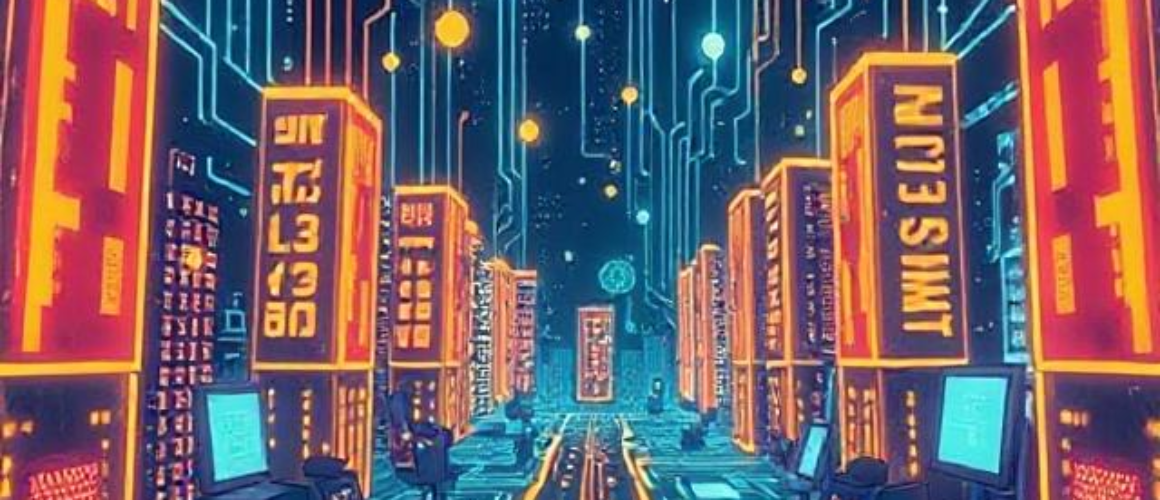Blockchain Technology: The “90s Internet” of Today
When you think about blockchain technology, it might feel like you’re on the edge of something revolutionary—much like how the internet felt back in the 1990s. During that time, the internet was an emerging technology with enormous potential, but it was still confusing and underutilized. It wasn’t until later that its transformative power became clear. In many ways, blockchain technology is currently in that same stage. It’s a game-changing innovation, but its full potential is only beginning to be understood and realized.
The Early Days: A Revolutionary Idea, But Few Understand It
In the 1990s, when the internet was first gaining traction, only a small group of tech enthusiasts and businesses saw its potential. The general public was skeptical, and the infrastructure to support it was still developing. There were a lot of early adopters, but mass adoption was slow. In fact, many people thought the internet would be a passing trend or just a tool for universities and research institutions. Fast forward to today, and the internet is embedded in nearly every aspect of modern life.
Right now, blockchain is in a similar position. Many people are still trying to grasp what blockchain is and how it will shape the future. It’s often misunderstood and seen primarily through the lens of cryptocurrencies like Bitcoin. However, blockchain technology is much more than just digital currency. It has the potential to disrupt industries across the board—from finance and healthcare to supply chains and voting systems. But, like the early days of the internet, it will take time for its full range of applications to unfold.
A Few Visionaries Leading the Charge
In the 90s, the internet’s early adopters—companies like Amazon, eBay, and Google—helped lay the foundation for the internet we know today. These were the pioneers who believed in the potential of the internet and worked to build platforms that would eventually become household names. However, the broader world took some time to catch up.
Similarly, in blockchain, we’re seeing early adopters pushing the boundaries of what’s possible. Fintech companies, decentralized finance (DeFi) platforms, and blockchain innovators are experimenting with ways to use blockchain for more secure, transparent, and efficient systems. Yet the wider public is still in the early stages of understanding how blockchain will revolutionize sectors like healthcare, logistics, and even voting.
The Challenges: Infrastructure, Regulation, and Adoption
One of the biggest hurdles in the early days of the internet was building the infrastructure to support it. It took time for internet service providers, broadband networks, and browsers to evolve and improve. Similarly, blockchain is facing its own set of challenges today. While the technology has enormous promise, there are issues like scalability, high energy consumption, and a lack of widespread regulation that still need to be addressed.
Moreover, just as the internet required a cultural shift for people to understand its value (from email and browsing to e-commerce and social media), blockchain faces a similar battle. People need to be educated on how to use it, how it works, and how it can benefit them. While adoption rates are rising, we’re still in the “early adopter” phase, much like the internet was in the 90s.
The Future: A Transformational Force
As the internet matured, it connected the world in ways that were previously unimaginable. Today, we can communicate with people across the globe in real time, shop online, access information instantaneously, and even work remotely. The internet has fundamentally changed the way we live, work, and interact.
Blockchain has the potential to do the same. In the future, we could see decentralized networks that allow for peer-to-peer transactions without the need for middlemen, digital identities that give individuals control over their personal data, and more transparent supply chains that allow consumers to trace the origin of the products they buy. Blockchain could become the backbone of a more secure, transparent, and efficient digital world.
Much like the internet, blockchain technology has the potential to revolutionize every aspect of our lives. But, just as the internet needed time to mature and be fully understood, blockchain will likely take years before it reaches its full potential. The technology is already transforming industries, but we’re still in the early stages. As infrastructure improves, regulations are put in place, and education spreads, blockchain could become as ubiquitous as the internet itself—changing the world in ways we can’t yet fully imagine.
Conclusion: The Parallel is Clear
Blockchain technology, like the internet in the 90s, is poised for a future of growth, innovation, and transformation. While it may still be in its infancy, it holds incredible promise. Just as the internet revolutionized the way we live, work, and interact, blockchain has the potential to do the same. For now, it’s up to visionaries, innovators, and early adopters to pave the way. But the future of blockchain is undeniably bright—and, much like the internet in the 90s, we are just beginning to scratch the surface of its true potential.

